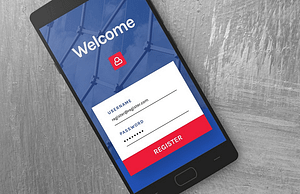It’s no secret that mobile usage is on the rise. In fact, as of March 2017, there were more than 2.1 billion active global mobile phone users. That’s a lot of people. Ignoring this trend is a recipe for disaster for any business. A mobile-friendly website is essential for success in today’s market. Webdesign in 2022 has driven this trend, where everyone tries their best to provide the best website and overall experience for the audience with their mobile devices. So today, let’s talk about how to start optimizing websites for mobile devices and the key pillars of it.
User-Friendliness
 The first pillar of a mobile-optimized website is user-friendliness. Your website should be easy to navigate, with clear menus, buttons, and links easily accessible from any device. This means using features such as dropdown menus or hamburger menus on the navigation bar to make it easier for users to find what they’re looking for. Additionally, you should ensure that your website is responsive and works properly on any device – be it a phone, tablet, or desktop.
The first pillar of a mobile-optimized website is user-friendliness. Your website should be easy to navigate, with clear menus, buttons, and links easily accessible from any device. This means using features such as dropdown menus or hamburger menus on the navigation bar to make it easier for users to find what they’re looking for. Additionally, you should ensure that your website is responsive and works properly on any device – be it a phone, tablet, or desktop.
Page Loading Speed
A key component of user-friendliness is page loading speed. If your website takes too long to load, users will likely get frustrated and abandon the site altogether. To ensure your website loads quickly on mobile devices, you should compress images and reduce their sizes as much as possible. Additionally, use a content delivery network (CDN) to reduce latency in loading times for users around the world.
Security and Privacy
 Perfect user-friendliness and a fast page load rate are essential. So are security and privacy. As mobile usage grows, so does the risk of cyber attacks such as data theft or malicious software downloads. To prevent this, you should ensure that your website is secure with the latest encryption technology. Additionally, it’s a must to provide users with a way to control their personal information – be it through a privacy policy or other means.
Perfect user-friendliness and a fast page load rate are essential. So are security and privacy. As mobile usage grows, so does the risk of cyber attacks such as data theft or malicious software downloads. To prevent this, you should ensure that your website is secure with the latest encryption technology. Additionally, it’s a must to provide users with a way to control their personal information – be it through a privacy policy or other means.
Functionality and Performance
 The last pillar of mobile-optimized websites is functionality and performance. Your website should perform consistently on any device, with no lags or crashes that could disrupt the user experience. Additionally, features such as touch screens should be taken into consideration when designing a website for mobile devices. And finally, make sure to test your website on different devices and browsers before launching it to the public.
The last pillar of mobile-optimized websites is functionality and performance. Your website should perform consistently on any device, with no lags or crashes that could disrupt the user experience. Additionally, features such as touch screens should be taken into consideration when designing a website for mobile devices. And finally, make sure to test your website on different devices and browsers before launching it to the public.
By considering user-friendliness, page loading speed, security, privacy, functionality, and performance – you can ensure that your website is optimized for all mobile users. With a few tweaks here and there, you can make sure that your website is the best it can be for those on the go. So are you ready to get started? Let’s go.
